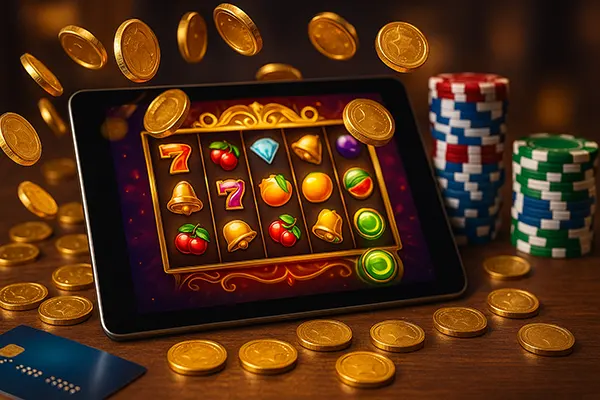Microtransactions in Slots: Hidden Costs and Psychological Triggers

Microtransactions in online slots have become a defining feature of the modern gambling industry, shaping both the player experience and the revenue models of game developers. While they may seem like small, optional payments, these transactions can have a significant cumulative effect on players’ spending habits. Understanding how they work and why they are so effective requires a close look at both the financial and psychological elements involved. In 2025, with the increasing integration of microtransaction systems in slot games, it is more important than ever for players to be aware of their implications.
The Financial Reality of Microtransactions
Although each microtransaction may cost only a small amount, the aggregated expenses over time can be substantial. This is particularly true for players who engage in frequent gameplay sessions or chase bonus features. Many slot games are designed to encourage repeat purchases of in-game credits or spins, creating a steady stream of income for operators while gradually increasing the player’s financial commitment.
Microtransactions are often presented in small, psychologically appealing amounts, such as £1.99 or £4.99. These price points are deliberately chosen to appear insignificant, making it easier for players to justify the purchase without fully considering the long-term cost. When multiplied over weeks or months, these small spends can exceed the cost of traditional casino play.
In addition, promotional bundles and time-limited offers can create a sense of urgency, prompting players to spend more in shorter periods. The structure of these offers often encourages higher spending through perceived value, even when the actual cost is higher than it appears.
Recurring Payments and Player Behaviour
The subscription-like nature of frequent microtransactions can alter a player’s spending habits, leading to increased engagement and, in some cases, financial strain. Unlike traditional single-entry bets, microtransactions are designed to keep the flow of money consistent, turning gambling into an ongoing financial commitment rather than a one-off activity.
Research in 2025 shows that players who frequently engage with microtransactions often underestimate their total expenditure. This effect is amplified by in-game features that mask real-world spending, such as the use of virtual credits instead of currency values. By detaching the act of payment from the perception of loss, these systems reduce financial self-awareness.
Another key factor is the gamification of payments. Small achievements, loyalty points, or cosmetic rewards can incentivise additional spending without offering tangible value. Over time, this can normalise higher levels of expenditure, especially for those who play regularly.
Psychological Mechanisms Behind Microtransactions
Microtransactions are not just about revenue; they are deeply tied to behavioural psychology. Developers utilise proven methods from behavioural economics and game design to encourage spending. One of the most common techniques is the use of intermittent rewards, where payouts or bonuses are unpredictable but highly enticing.
This unpredictability taps into the brain’s reward system, triggering dopamine responses that reinforce continued play. The excitement of a potential win can make players more willing to spend small amounts repeatedly, hoping to reach a reward threshold.
Social comparison is another powerful trigger. In games with competitive or community features, seeing others succeed or showcase rare rewards can push players to spend in order to match or surpass them. In many cases, these rewards do not affect gameplay outcomes but still drive strong emotional engagement.
The Role of Visual and Audio Cues
Slot games in 2025 employ advanced sound design and high-definition graphics to create a sensory-rich experience. Every purchase or win is reinforced with animations, celebratory sounds, and visual effects that amplify the perceived value of the action. This makes microtransactions feel more rewarding than they actually are.
Bright colours, flashing symbols, and dynamic animations are not accidental — they are carefully designed to sustain attention and stimulate excitement. These cues often coincide with moments when players are most likely to make a purchase, such as after a near-miss or a bonus trigger.
Moreover, developers integrate subtle pacing mechanisms that slow gameplay after losses and speed it up after wins, nudging players towards making purchases during high-emotion states. This timing strategy is a key component in converting engagement into spending.

Responsible Play and Consumer Awareness
Given the complex mix of financial and psychological factors involved, responsible play is crucial. Awareness of how microtransactions function is the first step in maintaining control over gambling habits. Setting personal spending limits and monitoring activity can help prevent unintended overspending.
Regulators in 2025 have increased scrutiny on microtransaction practices, with some jurisdictions requiring clearer price displays and mandatory spending tracking. These measures aim to enhance transparency and protect players from deceptive or manipulative payment structures.
Players can also benefit from independent financial tracking tools that calculate real-money expenditure in real time. By making the true cost of play visible, these tools help reduce the disconnection between in-game spending and actual financial impact.
Industry Responsibility and Ethical Design
While players hold responsibility for their spending decisions, developers and operators also have an ethical obligation to design systems that minimise harm. Ethical game design can include clearer spending indicators, easy-to-access budgeting tools, and limits on repetitive purchase prompts.
Some operators in 2025 are adopting voluntary codes of conduct that go beyond regulatory requirements. These include caps on daily microtransaction spending and built-in cooldown periods to prevent excessive play. Such measures can help create a healthier gambling environment without eliminating the entertainment value of slots.
Ultimately, balancing profitability with player welfare requires a commitment to transparency and fairness. When both sides — players and industry — take steps to address the risks, microtransactions can remain a manageable and enjoyable part of the slot experience.



